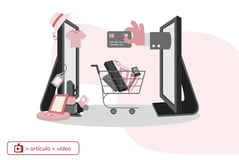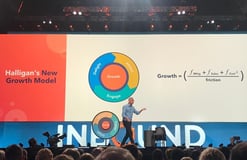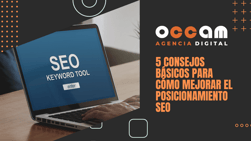Index Content
A lead is a user who, once on a website, provides some information about themselves that allows the website operator to get to know them and remove them from anonymity. Normally this conversion takes place through calls to action that invite the prospect to share information in exchange for some benefit.
Itis essential for any business to gain leads, as they allow you to get to know the people who visit your site, understand what they are like, and thus be able to create a targeted and individualised marketing strategy.
Lead conversion is part of the interaction stage of inbound marketing, the point at which the company comes into contact with potential customers to convert them into buyers in the future.
Lead and customer nurturing has five stages: setting goals, selecting buyer personas, creating content, determining a timeline and, finally, measuring and improving. Advertising images would be part of content creation, although, as can be deduced, these are not the only useful element for lead creation.
The use of images
The first technique for capturing leads through images is to create an integrated strategy with other tools such as email, live chat, Facebook, Messenger, or social networks, complementing the different formats or integrating one within the other.
The design is fundamental. Although the objective of the image is a call to action, the image, as in any other context, must be well cared for and arranged to be attractive. The photograph should not be flashy or load the page. Intercalating an image with the text of the website, for example, is a good strategy. It benefits the content of the text, as the reader returns to it focused, and at the same time benefits the image, as the user comes to it as a break.
In line with the above, the image should be regular and scheduled. To attract prospects, it is necessary that calls to attention are efficient and prepared. A Hubspot study found that a call to attention within 5 minutes of engaging the prospect increases the chances of converting them into a customer. However, a balance must be found between usefulness and insistence. Overloading the reader can generate an antagonistic effect and cause them to leave the page.
Use a direct appeal. Any lead capture strategy should be direct, but even more so in the case of advertising images. A video or an email can allow you to delay the request for information a little longer and carry out a gradual conquest. However, an image has limited space and time to interact with the user, which makes it necessary to be clear, concise and precise. As in other areas of marketing, it is a question of identifying the audience.
Personalise the image to the lead. All leads should be nurtured according to their motivations, interests and stage of the life cycle in which they find themselves. Individualism is a determining factor in the success of the conversion. Moreover, attracting leads is not about capturing the more people the better, but about managing to catch those people who have the potential to become customers in the future. To detect who the contacts are, it is useful to have an updated database that allows them to be located, classified and ordered, which is also useful for other phases of marketing.
Another useful technique that combines much of the above is task automation: using software that autonomously performs routine actions, including the publication of advertising images, will gain leads as it simplifies tasks and autonomously detects the right moment to send the image.
In view of the omnichannel, an image must be adaptable to the different platforms with which users access the web. 600 pixels wide is an optimal dimension to transform and adapt to different designs, as well as publication on social networks.
Including a link to the landing page is basic. The image has a clear objective, to lead the user to a place where they can provide their details and, to do this, it must be addressable. You can opt for a camouflaged address, where the prospect clicks without being aware of the link that redirects them or for a more visible alternative such as buttons or links.
The reality is that today's society, from which every kind of marketing and business drinks, is more visual than any other. Internet users, therefore, also love visual content and opting for it as part of a lead generation strategy is a very convenient option.




